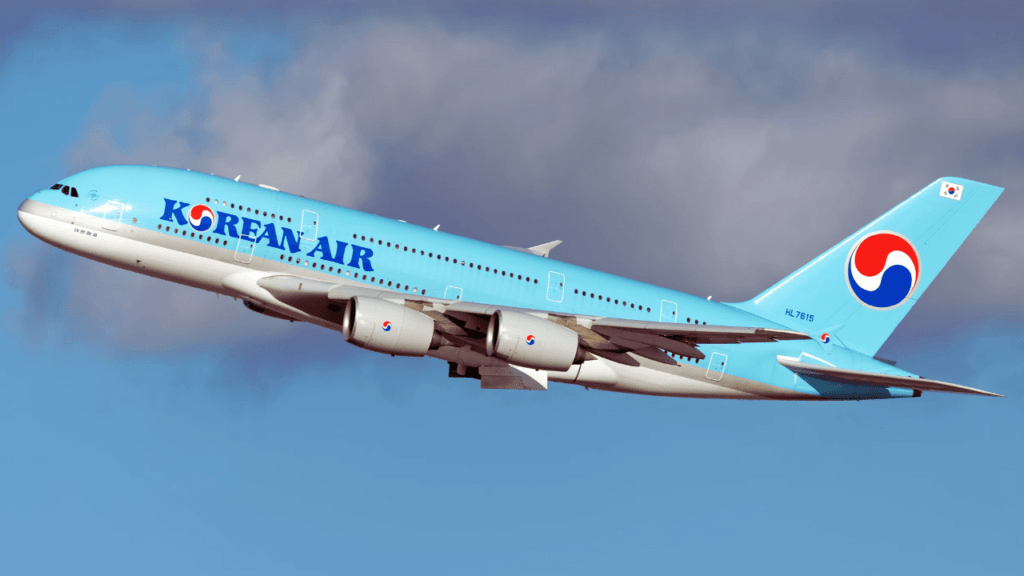Korean Air Flight KE189 experienced a drastic emergency descent of 26,900 feet due to a pressurization system malfunction, leading to an emergency landing.

In a harrowing mid-flight incident, Korean Air Flight KE189 experienced a drastic descent, plunging 26,900 feet in a matter of minutes due to a malfunction in the cabin pressurization system. The flight, a Boeing 737 Max 8, departed from Seoul’s Incheon International Airport (ICN) on June 22, 2024, at approximately 16:45 local time, routed to Taichung International Airport (RMQ) in Taiwan. The unexpected emergency has left passengers shaken and the aviation community on high alert.
Approximately 50 minutes into its flight, while flying above Jeju Island, the aircraft’s pressurization system failed. The flight crew received a message indicating an “abnormality in the pressure control function of the aircraft.” Reacting swiftly, the captain initiated an emergency descent from over 30,000 feet to around 9,000 feet in about 15 minutes to stabilize cabin pressure and ensure passenger safety.
Passenger Reactions
The rapid descent caused significant distress among the 125 passengers on board. Oxygen masks were deployed as the cabin pressure dropped sharply. Many passengers experienced severe discomfort, with reports of hyperventilation, ear pain, and even nosebleeds. One passenger described the experience as akin to an “extreme rollercoaster,” with sudden altitude drops inducing strong G-forces.
Children on the flight were particularly distressed, with crying and panic spreading throughout the cabin. Flight attendants, adhering to safety protocols, remained seated initially but quickly responded by providing necessary assistance and securing the cabin once the plane leveled off.
In the wake of the ordeal, several passengers expressed their fear and reluctance to fly again soon. One passenger shared her experience on social media, describing the chaos in the cabin and the intense physical discomfort she felt during the sudden descent. The quick response by flight attendants, the deployment of oxygen masks, and the emergency landing procedures, however, garnered appreciation from many for ensuring everyone’s safety.
Korean Air’s Response
Upon the aircraft’s emergency landing at Taichung, Taiwan, 17 passengers were evaluated at medical facilities for symptoms including ear pain and hyperventilation. Fortunately, no severe injuries were reported, and all affected passengers were discharged after receiving necessary care.
In the aftermath of the incident, Korean Air issued a formal apology to all passengers and assured full cooperation with relevant authorities to investigate the cause of the pressurization system failure. The airline provided comprehensive support to affected passengers, including accommodation, meals, and transportation arrangements, as the flight’s continuation was delayed until the following morning with a different aircraft.
A spokesperson for Korean Air emphasized the airline’s commitment to safety, stating, “We are conducting a thorough investigation to determine the cause of this malfunction and are addressing any maintenance issues to prevent future occurrences.”
Boeing 737 Max 8: Under Scrutiny
This incident adds to the ongoing scrutiny faced by Boeing regarding its 737 Max 8 aircraft. The model has been under intense pressure following a series of incidents and accidents in recent years. Boeing has pledged to collaborate closely with Korean Air and aviation authorities to ascertain the root cause of the pressurization system failure and implement corrective measures.
Summary
The Korean Air Flight KE189 incident underscores the critical importance of rigorous maintenance checks and swift emergency response protocols in aviation. As investigations continue, passengers and the aviation industry alike await comprehensive findings that will hopefully lead to enhanced safety measures and prevent future occurrences of such frightening mid-flight emergencies.
Read Next:

The Psychology of Love: Why Valentines Day Matters More Epic Than You Think
Discover the psychology of love and why Valentines Day is more important than you think. Learn how love impacts the brain, strengthens relationships, and boosts

Premier League Highlights: Arsenal Humiliate Man City 5-1, Spurs and Palace Secure Crucial Wins
Arsenal demolished Manchester City 5-1 in a statement premier league highlights win, reigniting their title hopes. Meanwhile, Crystal Palace stunned Man United 2-0, and Tottenham

How Budget 2025 Impacts the Indian Middle-Class: Major Tax Benefits and Glaring Omissions
Budget 2025 offers major tax relief to the middle class, including zero tax on incomes up to ₹12 lakh. However, it misses out on incentives
